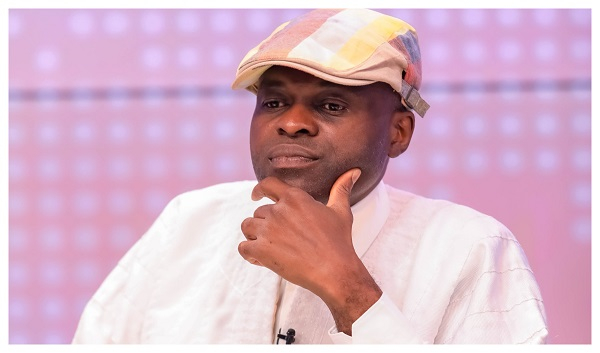Faster WiFi: Spectrum Concerns & Next-Gen Gadgets
India is poised to unlock the 6GHz spectrum for next-generation Wi-Fi, but a debate over transmission power levels is brewing between technology companies eager for faster speeds and government officials concerned about potential interference with existing services. The outcome will shape the future of wireless connectivity across the nation, impacting everything from home internet to emerging technologies like augmented and virtual reality.
The core of the dispute centers on the amount of energy Wi-Fi devices use to transmit signals. Higher power translates to stronger signals, greater range, and improved performance – notably crucial for demanding applications. However, increased power also raises the risk of disrupting established users of the spectrum, including satellite operators, broadcasters, and fixed dialog services.
Spectrum Explained: The 6GHz spectrum refers to a specific range of radio frequencies that can be used for wireless communication. Opening it up for Wi-Fi means more bandwidth for faster internet speeds.
Industry giants like meta, Sony, Google, and Apple, through their respective associations, are lobbying for higher transmission power limits. They argue that increased power is essential to support faster, wider Wi-Fi coverage and a better overall consumer experience. “What we have asked for is a minimal increase in the power limit and that does not disrupt existing services,” said Paramjit Singh Puri, director membership at Wi-Fi Alliance, which represents over 900 companies globally.
The Wi-Fi Alliance has proposed revising power limits for very low power outdoor devices to a maximum of 1 dBm/MHz and a total power of 14 dBm, and for low-power indoor devices to 11 dBm/mhz with a total power of 30 dBm. They point to studies suggesting minimal interference and emphasize the need for robust connectivity to support advanced use-cases like virtual or augmented reality (VR/AR), medical applications, and artificial intelligence. For example, AR/VR applications could revolutionize training for medical procedures and provide assistance to visually impaired individuals.
Use case Spotlight: Imagine surgeons practicing complex operations in a realistic VR environment, or visually impaired individuals navigating the world with AR assistance, all powered by fast, reliable Wi-Fi.
Despite the industry push, government officials remain cautious. A senior official stated that the primary concern is “the interference with the incumbents in the band,” which supports critical infrastructure like satellite-based applications, cable TV, and broadcasting services.
To mitigate these risks, the Department of Telecommunications (DoT) has drafted rules proposing low and very low power levels for Wi-Fi devices operating in the 5925-6425 MHz range. The proposed power emission levels are set at 5 dBm per MHz for indoor devices (with a maximum total power of 30 dBm) and -5 dBm for outdoor devices (with a maximum of 14 dBm). These levels are significantly lower than those advocated by the tech industry.
The debate highlights a growing tension between expanding digital connectivity and safeguarding existing infrastructure. the government is currently reviewing industry feedback on the feasibility of increasing power limits, with a second official noting that finalizing the rules and opening the band for use is the immediate priority. The possibility of revisiting power levels will be considered later, based on further studies.
The 6GHz band is considered crucial for supporting high-speed Wi-Fi and next-generation gadgets, including the Sony PlayStation and Meta’s Ray-Ban smart glasses. Analysts suggest that the performance of these devices will improve significantly once the band is fully licensed. Sony, as a notable example, has delayed the launch of its PlayStation 5 Pro in India due to the lack of access to the 6GHz band.
Interestingly, Reliance Jio stands apart from other telecom operators, supporting license-free use of the band. The company believes this approach will facilitate “Frugal 5G” deployment in rural areas,allowing operators to offload mobile traffic onto Wi-Fi and reduce spectrum usage costs.
While most telecom companies are eyeing the 6GHz band for future 6G services, Jio’s stance reflects a different strategy. The government recently approved 600MHz of the 1200MHz spectrum in the 6GHz band for auction to telecom operators, reserving the 6425-7125 MHz range for their use.
Some experts suggest that technology like automatic frequency coordination (AFC) could help mitigate interference concerns. According to Satya N. Gupta, former principal advisor at the Telecom Regulatory Authority of India (Trai), AFC can automatically manage frequency usage, ensuring that powerful outdoor Wi-fi devices don’t disrupt other critical services.
Another industry association, the ITU-APT Foundation of india (IAFI), has also called for an increase in power limits, proposing a boost of over 6dB. “This will be important for more robust performance both for indoor operation and also for wearable devices,” Bharat B. Bhatia, president of IAFI, told the DoT.
Globally, over 84 countries, including the US, have already opened up at least 500 mhz of the 6GHz band for Wi-Fi innovation. Communications minister Jyotiraditya Scindia has stated that the rules for license-free use of the 6GHz band in India will be finalized before August 15th.The final decision will determine India’s path forward in the rapidly evolving world of wireless technology,balancing the demands of innovation with the need to protect vital existing services.
“`html
The ongoing debate over Wi-Fi power limits in India is more than just a technical squabble; it’s a microcosm of the country’s broader journey towards digital empowerment. The choices made now regarding the 6GHz spectrum will considerably impact India’s technological advancement and its ability to participate fully in the global digital economy. The core of the discussion revolves around how quickly and efficiently India can adopt new technologies, balancing this with protecting its existing infrastructure [[1]].
The primary challenge comes down to managing the power output of Wi-Fi devices to ensure the 6GHz spectrum benefits consumers and businesses alike.The Indian government is carefully weighing the potential benefits of increased wi-Fi speeds against the risk of interfering with current services. This balancing act is crucial, determining the success of new technologies and safeguarding essential services [[3]].
The decisions regarding power limits will affect numerous sectors:
Automatic Frequency Coordination (AFC technology), mentioned earlier, is a critical part of the solution. By intelligently managing the use of radio frequencies, AFC can enable higher transmission power while minimizing the risk of interference. AFC systems act as sophisticated gatekeepers. Thay continuously monitor the spectrum for existing users and dynamically adjust the power output of Wi-Fi devices to avoid disruption.
The successful implementation of AFC depends on several factors:

Priyanka Patel
Former software engineer turned tech reporter. Explores AI, cybersecurity, gadgets and start-up culture.












